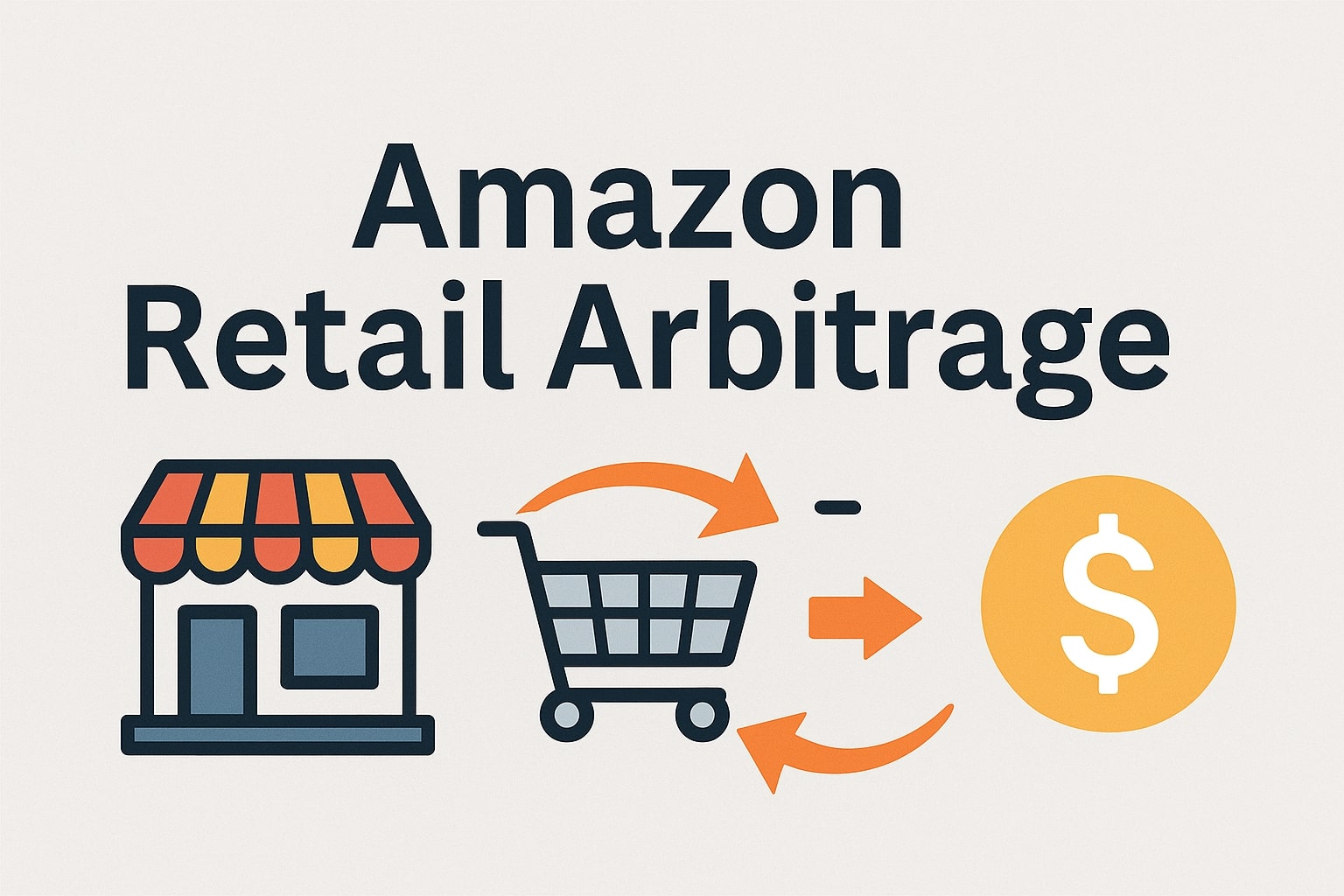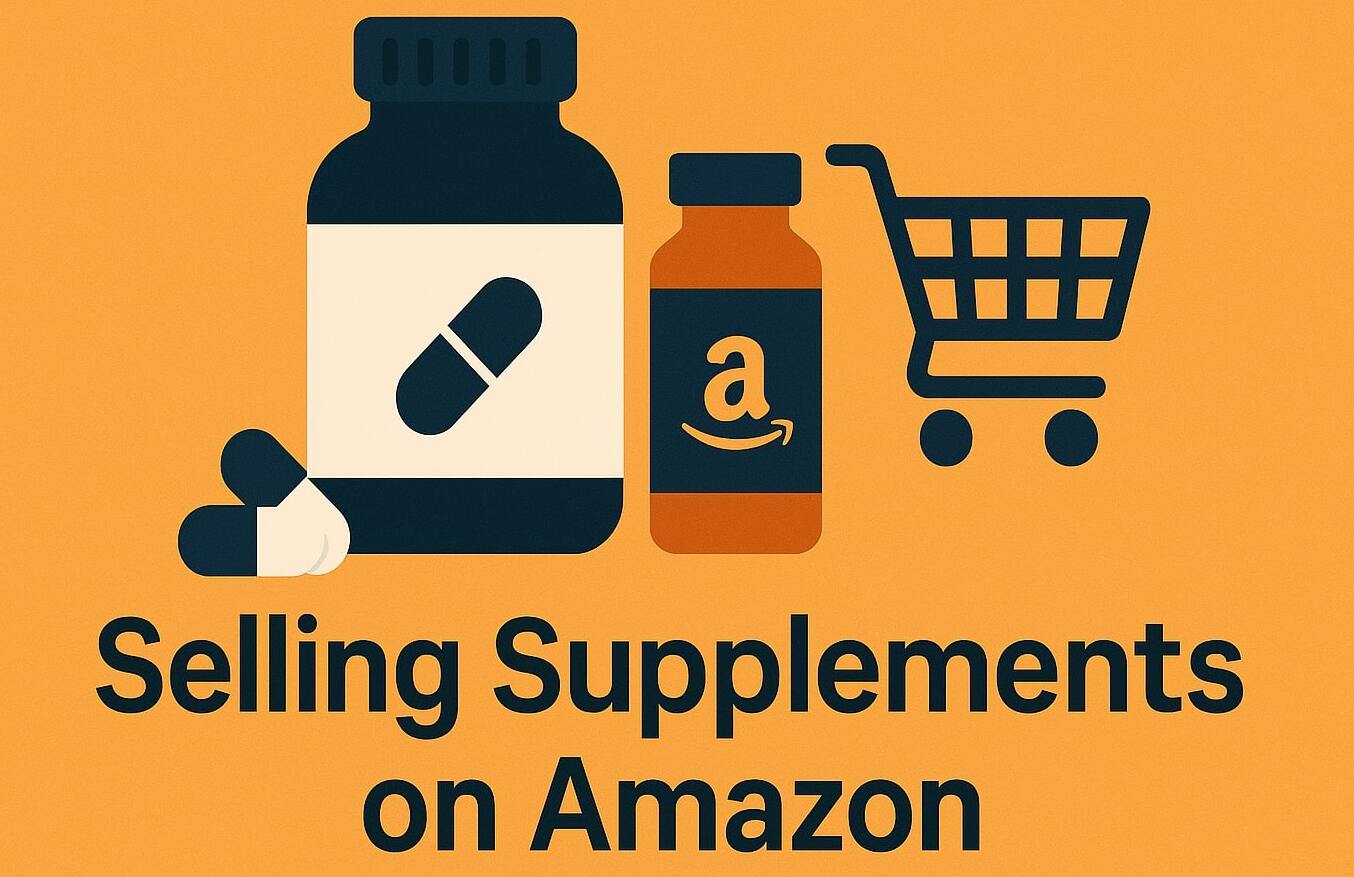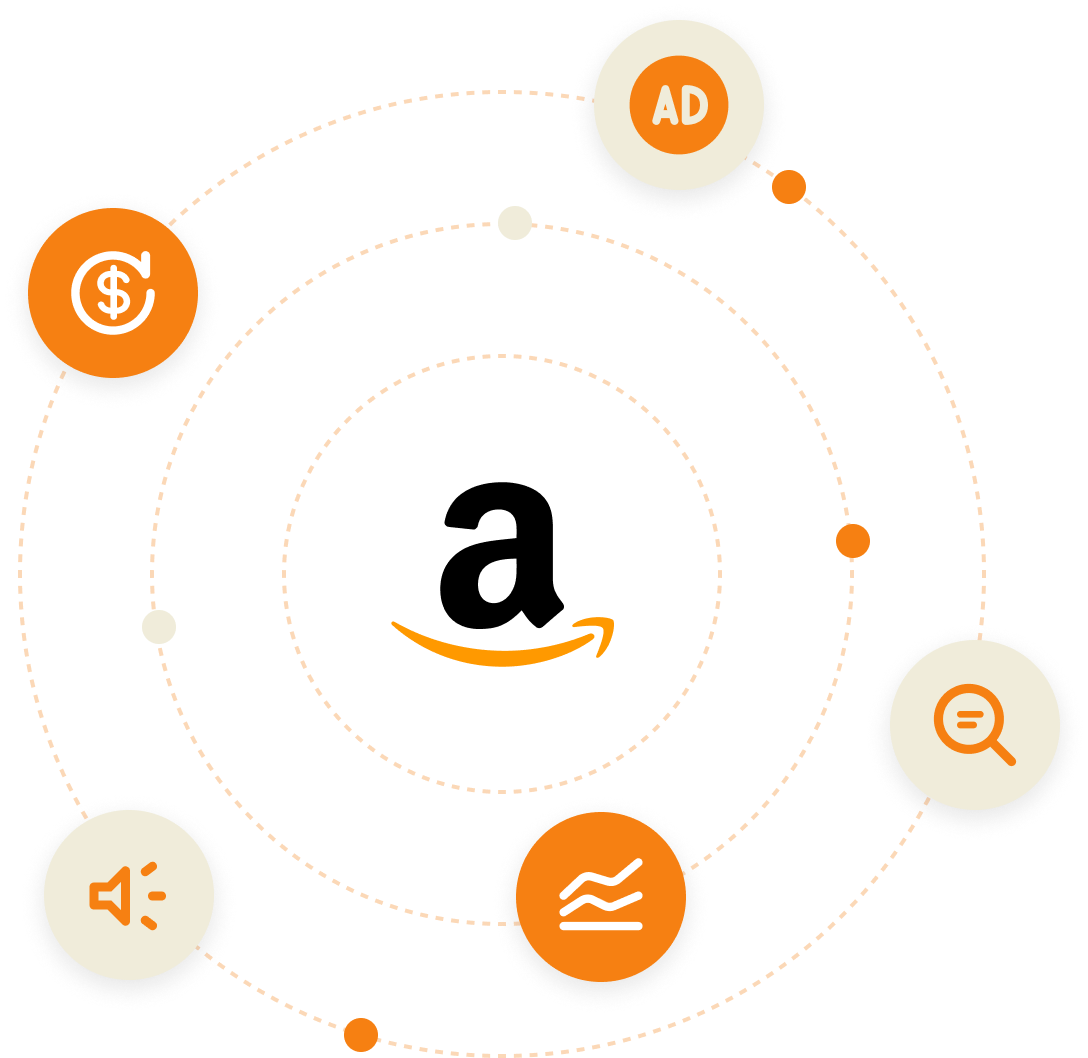Starting an online business can feel overwhelming with talk of private label, product research and development and complex supply chains.
Retail arbitrage offers a simple, low-risk way for both seasoned and new sellers to sell online with minimal investment and no product development required.
As a third-party seller, you can leverage Amazon’s massive customer base and existing listings – meaning no need to create product pages from scratch. You’re selling products that already have proven demand. You can walk into a store today, find discounted items, and have them listed on Amazon by tonight.
If you’ve ever thought about flipping products for profit, keep reading. We’ll cover what retail arbitrage is, how to start, and whether it’s worth it.
Is Your Amazon Store Reaching Its Full Potential?
Discover hidden opportunities, reduce wasted spend, and boost your sales with a free expert audit.
Our team will analyze your listings, ad performance, and overall account health to uncover exactly what’s working—and what’s holding you back. You’ll get a tailored blueprint to scale smarter, not harder.
Get a Free AuditWhat is Retail arbitrage?
Have you ever scored a great deal at a store and thought, “I could resell this for more money online?” Well, that’s the basic concept behind retail arbitrage. A sales method where you buy products at a low price from retail stores or online retailers (typically referred to as online arbitrage) and flip them on Amazon for a profit. Essentially, taking advantage of price differences between physical retail outlets and Amazon’s marketplace.
For example: You find a kitchen gadget on clearance for $20. On Amazon, it’s selling for $50. You buy it, list it on Amazon, and once it sells, you profit.
These price gaps often occur during clearance events or seasonal sales. Amazon shoppers are willing to pay more for convenience and fast delivery, making retail arbitrage a smart opportunity for resellers.
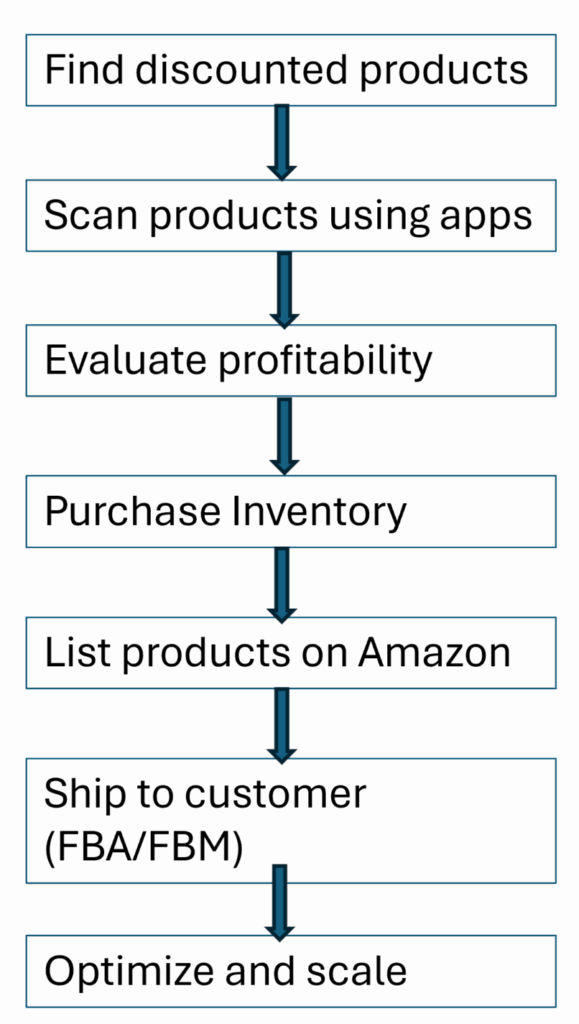
How to do Retail arbitrage on Amazon
Starting a retail arbitrage business on Amazon is relatively simple, especially compared to other e-commerce business models. Here’s a detailed step-by-step guide:
Step 1: Create an Amazon Seller Account
The first step to starting your retail arbitrage journey is to create an Amazon Seller Account:
Visit Amazon Seller Central and click Sign Up.
Choose between two account types:
Individual Seller Account: No monthly subscription fee, but you pay $0.99 per item sold. Best for beginners who plan to sell fewer than 40 items per month.
Professional Seller Account: Costs $39.99/month but comes with additional features, including bulk listing tools and access to advanced reports. Ideal if you plan to scale your business.
Enter your personal and business information and complete the identity verification and tax interview as required.
Pro Tip: Most sellers start with a Professional Account because it saves money once you start selling more than 40 items a month.
Step 2: Source Products to Sell
The next step is to find profitable products to resell. This is where the real work of retail arbitrage begins. Fortunately, there are tools for product sourcing available to help you streamline the process and make smarter, informed decisions when purchasing inventory:
Use Retail Stores to Find Deals:
Visit local retail outlets and discount stores. Focus on clearance sections and seasonal sales, as these offer the biggest advantage of price differences. Thrift stores and garage sales can also be gold mines for profitable items.
Analyze Prices and Profitability:
Several tools can help you quickly assess whether an item is worth reselling:
- Amazon Seller App: Use this free app for scanning product barcodes while shopping. It shows the item’s current selling price on Amazon, estimated fees, and potential profit. This is essential for on-the-spot decisions.
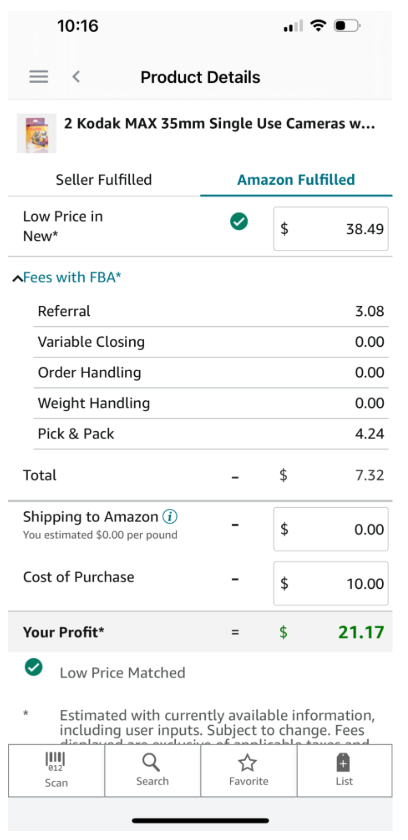
- Price Tracking Tools: Use tools, such as Keepa, that provide historical sales data and pricing trends to help determine whether a product’s current price is stable or likely to drop.
- Deal-Finding Platforms: Online platforms that track in-store deals and clearance items at major retailers can save you time by helping you locate discounted products before heading out.
Look for Price Discrepancies:
Focus on items where the retail price is significantly lower than the price on Amazon. Aim for a profit margin of at least 20% after Amazon fees. When using apps like the Amazon Seller App pay attention to the net profit and return on investment figures to ensure the item is worth buying.
Buy in Small Batches:
When starting out, purchase a few units of each product to test how quickly they sell. This minimizes your risk and prevents you from getting stuck with unsold inventory. Once you find products that consistently sell well, consider buying in larger quantities to maximize your profits.
Step 3: List Your Products on Amazon
Now that you’ve sourced your products, it’s time to list them for sale:
Log in to Amazon Seller Central and click Inventory > Add a Product.
Search for the product using its name, barcode, or ASIN (Amazon Standard Identification Number).
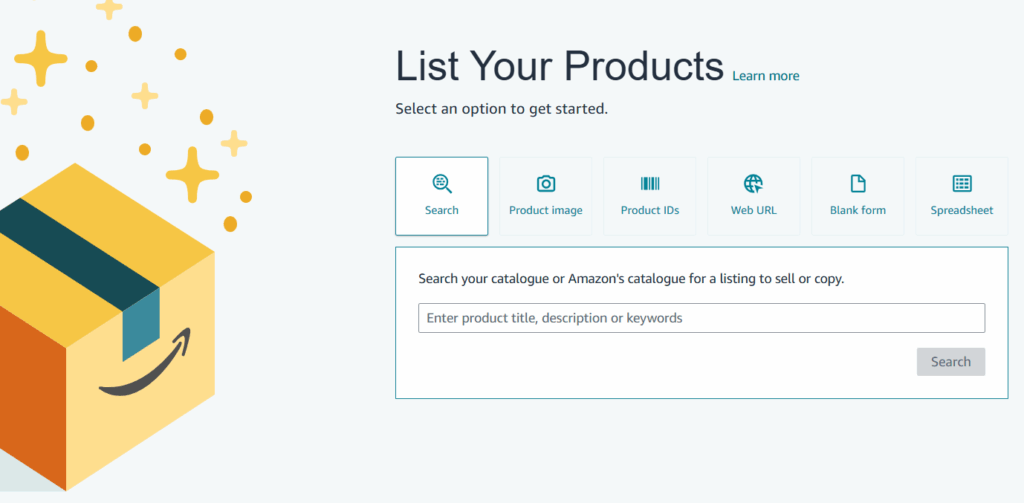
Select the correct product listing. Since you’re reselling existing products, you’ll use the existing listing instead of creating a new one.
Enter the product details, including:
Condition: Choose “New” if the product is in its original, unopened packaging.
Price: Set a competitive price based on other sellers’ listings.
Quantity: Enter the number of units you’re selling.
Choose your fulfillment method:
Fulfilled by Amazon (FBA): Amazon handles storage, shipping, and customer service. Recommended for scalability.
Fulfilled by Merchant (FBM): You handle packaging, shipping, and customer service yourself. Ideal if you’re just starting out or want to save on FBA fees.
Once your products are listed, the next step is to attract customers. If you’ve chosen a product with low to moderate competition, you should naturally start gaining visibility over time and if priced competitively you should win the Buy Box. However, if you want to speed things up and increase your reach, consider running Amazon ads to get your product in front of more potential buyers.
Step 4: Ship Your Products to Amazon (If Using FBA)
If you choose Fulfillment by Amazon (FBA), you’ll need to send your products to Amazon’s fulfillment centers:
- In Seller Central, go to Inventory > Manage Inventory and select the items you want to send.
- Click Send/Replenish Inventory and follow the instructions to create a shipment plan.
- Print the shipping labels provided by Amazon.
- Pack your products securely in a shipping box and attach the labels.
- Drop off the package at your nearest shipping carrier (usually UPS).
Pro Tip: Use Amazon’s Partnered Carrier Program for discounted shipping rates when sending inventory to fulfillment centers.
Step 5: Optimize Your Product Listings
Although you’re using existing product listings, you can still optimize your listings to stand out from competitors:
- Price Competitively: Monitor your competitors’ prices and adjust yours accordingly. Tools like Amazon’s Automate Pricing can help you stay competitive.
- Win the Buy Box: The Buy Box is the “Add to Cart” button that most customers use. To increase your chances of winning the Buy Box, offer competitive pricing, maintain high seller performance metrics, and provide fast shipping.

Step 6: Manage Your Business and Scale Up
Once your products start selling, focus on managing your business and scaling up:
- Monitor Your Inventory: Keep track of your stock levels and restock best-selling items to avoid running out.
- Track Your Profit Margins: Use tools to monitor your profitability after fees and shipping costs.
- Reinvest Your Profits: Use the profits from your initial sales to buy more inventory and scale your business gradually.
- Expand Your Product Categories: As you gain experience, experiment with different categories to diversify your income.
How to find retail arbitrage products to resell on Amazon
Finding profitable products is the key to success in retail arbitrage. The good news is that with the right strategies and tools you can consistently source products that sell well on Amazon.
Many successful retail arbitrage sellers source their products from popular retail chains, local discount stores, and clearance sections. Here are some of the best places to look:
- Big Box Stores: Walmart, Target, Costco, and Sam’s Club are excellent for finding discounted items, especially during seasonal clearance sales.
- Department Stores: Kohl’s and Burlington are great for sourcing discounted clothing, home goods, and accessories.
- Discount Stores: Check stores like TJ Maxx, Marshalls, Ross, HomeGoods, and Dollar General (or other dollar stores) for hidden gems at low prices.
- Sporting Goods Stores: Dick’s Sporting Goods offers discounts on sports equipment, outdoor gear, and athletic apparel.
- Convenience Stores: Don’t overlook CVS, Walgreens, Rite Aid, and other convenience stores—especially their clearance sections, which often have discounted personal care items, supplements, and seasonal goods.
- Grocery Stores: Look for discounted non-perishable items, specialty foods, and seasonal products that can be resold for a profit.
- Thrift Stores and Garage Sales: Used books, electronics, and collectible items can be bought for pennies and resold for a profit.
Types of products to resell on Amazon
Choosing the right products is essential for success in retail arbitrage. Certain categories tend to sell faster and yield higher profit margins, making them ideal for both beginners and experienced sellers. According to a study by Jungle Scout, the following categories are the most popular among retail arbitrage sellers on Amazon:
| Category | Percentage of Sellers |
|---|---|
| Beauty & Personal Care | 37% |
| Clothing, Shoes & Jewelry | 34% |
| Home & Kitchen | 31% |
| Arts, Craft & Sewing | 29% |
| Toys & Games | 27% |
| Electronics | 25% |
| Groceries & Gourmet Food | 25% |
| Books | 23% |
| Health, Household & Baby Care | 22% |
| Office Products | 21% |
If you’re just getting started with retail arbitrage, it’s best to begin with products that are easy to source, lightweight, and have consistent demand. For example, toys and games like board games and action figures are always popular, especially during the holiday season. In the beauty and personal care category, items like skincare products and cosmetics are lightweight, easy to ship, and consistently in demand.
Beginners should avoid products that are more complex to sell. For example, electronics often have high return rates and the risk of defects, while grocery and gourmet food items can be tricky due to expiration dates and special handling requirements.
Is retail arbitrage legal?
100% yes. This question gets asked alot. People worry that reselling products they bought from a store might be illegal, but that’s not the case.
It’s called the first-sale doctrine – once you purchase a product, you own it, and you have the right to resell it. This applies whether you bought the product from a local store, an online retailer, or directly from the manufacturer. For example, if you find wireless headphones on clearance at a local store, you can legally resell them on Amazon for a profit.
However, while retail arbitrage is legal, there are a few important things to keep in mind:
- Product Authenticity: The items you resell must be genuine and not counterfeit. Selling unauthorized or counterfeit products is illegal and can lead to your Amazon account suspensions or bans.
- Brand Restrictions: Some brands have restrictions on third-party sellers reselling their products on Amazon. These brands may require you to obtain approval (known as “brand gating”) before you can list their items. It’s essential to check Amazon’s policies before sourcing products from well-known brands.
- Condition of Products: Products must be sold in their original condition, especially if listed as “new.” Selling used or damaged items as new violates Amazon’s policies and can result in penalties.
- Intellectual Property Rights: Avoid using a brand’s logo, images, or copyrighted materials without permission. This can lead to intellectual property claims, even if the product itself is legally resold.
Many Amazon sellers successfully run retail or online arbitrage businesses without any legal issues, as long as they follow these guidelines. In fact, Amazon itself allows and supports arbitrage, as long as sellers comply with their terms of service.
Is Amazon arbitrage profitable?
Retail arbitrage can be profitable if done strategically, but it’s not a guaranteed path to riches. Potential profit largely depends on finding high-demand products at discounted prices and pricing them competitively. Success also involves staying updated on market trends to identify products that are currently in demand. Another key factor is understanding Amazon’s fees, including referral fees, fulfillment fees, and storage fees, which can impact your bottom line. Still, with careful product selection and effective pricing strategies, retail arbitrage can produce steady profits and become a reliable source of income.
How much does it cost to start retail arbitrage?
One of the biggest reasons retail arbitrage is so popular is because of its low startup costs. Unlike other Amazon business models that require large investments in product development or bulk orders from manufacturers, retail arbitrage allows you to start with a low initial investment. According to a study by Jungle Scout, almost half of retail arbitrage sellers spent less than $1,000 to get started, with one in three spending less than $500. Of those sellers, 41% reported launching their Amazon business in six weeks or less. This makes it an accessible option for beginners who want to test the waters without risking too much capital.
Your expenses include purchasing inventory, Amazon’s seller fees, and potential shipping costs if you’re fulfilling orders yourself. If you use Fulfillment by Amazon (FBA), there are additional storage and fulfillment fees, but the trade-off is that Amazon handles customer service and shipping. Since you don’t need to invest in creating products, building a brand, or maintaining a website, retail arbitrage is one of the most cost-effective ways to generate an income stream.
Can you make a living off retail arbitrage?
Many people make a full-time income from retail and online arbitrage, but success depends on your selection of products, pricing strategies, and ability to scale your business. While some sellers start as a side hustle, others earn thousands of dollars per month by finding high-demand products with solid profit margins. However, retail arbitrage comes with its pros and cons:
| Pros | Cons |
|---|---|
| Low start-up cost – minimal inventory required | Time consuming – sourcing products can take time |
| Low risk – starting with a minimal amount of capital and sourcing products with existing sales history | Low profit margins – typically less than 20% |
| Simple business model – no need to develop product ideas or manufacture products | Inconsistent Inventory – Availability and purchase price can vary week to week |
| Scalable – Reinvest your profits to grow your business | Competition – Other sellers can lower prices resulting in a price war |
| Access to a large customer base | Brand Restrictions – some brands restrict re-selling or Amazon itself may require you to apply to become un-gated |
| Use existing product listings – No need for photography or graphic design | Market fluctuations – market demand and prices can change |
Pro Amazon retail arbitrage tips
Want to take your retail arbitrage game to the next level? While finding good deals and listing products on Amazon is essential, mastering advanced strategies can help you stand out from the competition and maximize your profits. Here are expert-level tips to help you succeed:
1. Use Technology to Gain a Competitive Edge
- Scanning Apps: Use scanning apps like the Amazon Seller App and advanced retail arbitrage tools to scan product barcodes, view selling prices, estimate fees, calculate actual profit, check real-time sales data, and analyze competition. For high-volume sourcing, consider using handheld barcode scanners to scan items quickly and efficiently.
- Advanced Pricing Tools: Use automated repricing tools to adjust your product prices in real-time and stay competitive without constantly monitoring your listings.
- Profit Calculators: Use profit calculators to determine your actual costs by accounting for Amazon fees, shipping costs, and taxes to ensure you’re meeting your profit margin goals before purchasing inventory.
2. Source Smarter, Not Harder
- Timing Is Everything: Take advantage of seasonal clearance sales, holiday promotions, and post-season discounts when retailers are eager to clear out inventory.
- Build Relationships with Store Managers: Developing relationships with store managers can give you insider information on upcoming clearance events and discounted products before they hit the shelves.
- Think Outside the Big-Box Stores: Don’t limit yourself to major retailers. Check local discount stores, outlet malls, thrift shops, and liquidation sales to find hidden gems with less competition.
3. Maximize Profitability
- Focus on high-ROI products: Prioritize products with a minimum profit margin of 20% to ensure you’re making money after Amazon fees and shipping costs.
- Buy in bulk: Once you’ve identified a profitable product with consistent demand, consider buying in larger quantities to reduce your cost per unit.
- Leverage cashback and rewards: Use credit cards with cashback rewards and retailer loyalty programs to save money and increase your overall profit.
4. Optimize Your Fulfillment Strategy
- Choose the right fulfillment method: If you want faster sales and less hands-on work, use Fulfillment by Amazon (FBA) to take advantage of Amazon’s shipping and customer service. For lower fees, consider Fulfilled by Merchant (FBM) for larger, heavier, or slower-selling items.
- Prep your products correctly: Ensure your items are properly labeled, packaged, and protected to avoid issues with Amazon’s fulfillment centers and minimize returns due to damaged goods.
5. Avoid Common Pitfalls
- Overpaying for inventory: Always calculate your profit margin after Amazon fees. If the profit is too small, move on to another product.
- Ignoring restricted brands: Some brands are restricted on Amazon and require approval to sell. Always check before purchasing items to avoid unsellable inventory.
- Neglecting amazon fees: Factor in Amazon’s referral, fulfillment, and storage fees before making a purchase. Ignoring these costs can eat into your profits.
- Poor inventory management: Keep track of your stock levels and restock popular items to avoid losing sales due to stockouts. Don’t overstock products that have slow turnover, as long-term storage fees can reduce profitability.
6. Tips for Long-Term Success
- Start small, scale gradually: Begin with a small inventory to minimize risk and test different products. As you gain experience and identify profitable items, reinvest your profits to scale your business.
- Be consistent: The key to success is consistently sourcing new products. Make sourcing trips part of your regular routine to maintain a steady flow of inventory.
- Adapt to market trends: Keep an eye on seasonal trends, new product releases, and consumer demand shifts. Being the first to spot a new trend can give you a competitive advantage.
- Monitor your competition: Keep an eye on other sellers and adjust your pricing strategy to stay competitive. Avoid pricing too low, as it can lead to price wars that hurt profitability.
7.Treat It Like a Business, Not a Hobby
Retail arbitrage is a legitimate business that can generate substantial income when done correctly. Treat it seriously by tracking your expenses, managing your cash flow, and continuously improving your sourcing and sales strategies. With persistence and smart decision-making, you can turn retail arbitrage into a profitable and sustainable business.
Struggling to Scale on Amazon?
Get a free expert audit and uncover quick wins to boost sales and cut ad waste.
Get a Free AuditConclusion: Ready to Flip Deals Into Profits?
Retail arbitrage is one of the easiest and most accessible ways to start selling on Amazon. With low startup costs, quick turnaround times, and the ability to leverage existing product listings, it’s a great entry point for beginners and a profitable side hustle for experienced sellers. By sourcing discounted items from retail stores, using scanning apps to analyze profits, and listing products strategically, you can start generating sales within weeks.
However, retail arbitrage isn’t without its challenges. Profit margins can be lower compared to other Amazon selling methods, and sourcing inventory requires time and effort. As you gain experience, consider expanding into dropshipping or private label selling, both of which can offer higher profit margins and more sustainable long-term growth. Private labeling, in particular, allows you to build your own brand, control pricing, and create a more scalable business.
No matter which path you choose, the key to success is consistency. With dedication and smart decision-making, you can turn retail arbitrage into a profitable business—or use it as a stepping stone to bigger opportunities on Amazon.
Need help with your Amazon business? Contact our team for expert support with everything from product research to scaling your sales!


